
Over at The Castle of the Immaculate, Helen has suggested a week of posts dedicated to the Immaculate Heart. I had wanted to come back an post a picture of the matching Immaculate Heart to my great grandfather’s unique Sacred Heart and so it is a perfect opportunity to do the two together..
The trouble is I’ve got a virus at present with wicked headaches and I can’t think too straight to write much but I found a beautiful article on the Immaculate Heart of Mary over at Theotokos which I was so thoroughly enjoyed, I thought I would post the article here for you to enjoy as well.

But I do have a few things to say...When I was designing the Immaculate Heart to match the Sacred Heart, it was easy to draw the heart symbolizing the Immaculate Heart of Mary but the scroll required a bit more thought. I needed to write a similar phrase to the Sacred Heart’s “The Heart that is never strange or cold...The Love that is ever new and old” After praying for help I came up with this phrase that describes Mary’s Heart: “How tender Thy love for the human race...Thy Motherly Heart in the fullness of grace.” The scroll was surrounded by Myosotis (blue forget-me-nots) or “Our Lady’s Eyes”
When I look at the Immaculate Heart of Mary, I hear the echo of her motherly words to Juan Diego, “I am your merciful mother, the mother of all of you...of all mankind, of all those who love me, of those who cry to me, of those who seek me, of those who have confidence in me...I will hear their weeping, their sorrow, and will remedy and alleviate their suffering, necessities and misfortunes.”
Then this beautiful discourse continues again to us when Our Mother says, “Listen and be sure...that I will protect you; do not be frightened or grieve, or let your heart be dismayed, however great the illness may be that you speak of. Am I not hear? I, who am your Mother, and is not my help a refuge? Am I not of your kind? ...Is there anything else that you need?”
My heart is deeply affected by these words, I cannot help but to cry every time I read them...I have a piece of my own father’s heart, he cried at beautiful things. But tell me, is there anything more beautiful than those words? When I look at the Immaculate Heart of Mary I see a refuge to ALL things, without fail - to all life’s needs, in good and bad and in the times of joy and in times of sorrow and trial. I pray that Mary gives me a piece of her heart when I open my eyes each day and look upon the blessings entrusted to my care.
Here is the article over at Theotokos:
The link between devotion to Mary's Immaculate Heart and the Sacred Heart of Jesus is shown in the following passage:
"...a short time after Pascal had carried out the first experiments in modern physics and Descartes had perfected the mathematical instruments which would make possible the development of the sciences, Jesus appeared to an obscure nun and, showing her his heart, said to her: 'This is the heart that has so loved men.'
"Then, as men did not listen to the message of Paray-le-Monial and the corruption of the world continued, the Virgin Mary appeared to the children at Fatima; she showed them her heart and said: 'The Lord wishes to establish devotion to my Immaculate Heart in the world. If what I say is done, many souls will be saved and there will be peace.'
"The remedy that God offers for the evils of the world is to show us his heart and that of his Mother. 'We have learned to recognize the love God has in our regard, to recognize it, and make it our belief,' said St John (I John 4.16).
"The Christian solution to the problem and desperate call of the world will always be to believe in love, to give ourselves up to it and so receive the will and the strength to serve others." (Fr Henri Marduel, "The Christian Pursuit," London, Burns & Oates, 1964, p. 22).
Historically, devotion to the Heart of Mary grew up in parallel, but at a lesser pitch than that of devotion to the Heart of Jesus, only starting to become more prominent during the time of St John Eudes. Even then it was not until after the Apparitions at Rue du Bac concerning the "Miraculous Medal" made to Catherine Labouré in 1830, and the establishment of a society dedicated to the Immaculate Heart of Mary, at the Church of Our Lady of Victories in Paris in 1836, that this particular devotion became really well known.
Since then devotion to the Immaculate Heart of Mary, has gradually grown more widespread in the Church, particularly since the apparitions at Fatima.
The main difference between these two devotions is that the one concerned with Jesus emphasises his divine heart as being full of love for mankind, but with this love for the most part being ignored or rejected, while devotion to Mary's heart is essentially concerned with the love that her heart has for Jesus, for God.
It is not an end in itself, and really the love of her heart is meant to be a model for the way we should love God. So as in all things Marian, she leads us closer to God, rather than becoming an obstacle in our way. The fact that her heart is immaculate, that is sinless, means that she is the only fully human person who is able to really love God in the way that he should be loved.
Honouring Mary's Immaculate Heart is really just another way of honouring Mary as the person who was chosen to be the Mother of God, recognising her extraordinary holiness and the immense love she bestowed on Jesus as his mother, the person who was called to share in and co-operate in his redemptive sufferings.
The whole aim of this devotion is to unite mankind to God through Mary's heart, and this process involves the ideas of consecration and reparation. A person is consecrated to Mary's Immaculate Heart as a way of being completely devoted to God. This involves a total gift of self, something only ultimately possible with reference to God; but Mary is our intermediary in this process of consecration.
There have been some criticisms of the whole idea of "consecration" to Mary, with some arguing that it is improper to speak in such terms, since it obscures the essential consecration to God. This position, though, seems to go against the traditional approach as exemplified by St Louis de Montfort, one that has been essentially accepted and acted upon by Pius XII and John Paul II in the twentieth century.
If it was unacceptable to consecrate the world to Mary's Immaculate Heart then obviously the above popes would not have done so. To criticise the principle of Marian consecration is also to lose sight of the central reality of the various Marian apparitions, that they concern Mary rather than Jesus.
If Jesus had only wanted a consecration to his own Sacred Heart, then clearly he, rather than Mary, would have appeared repeatedly over the last several centuries. The fact that it is Mary who has appeared in so many places, and that the Church at its highest level has accepted this, indicates that Mary's role is central and that consecration to her is not illogical, providing it is clearly understood that "belonging to Mary is a privileged means of belonging to Christ."
In reality because of the strong analogy between Jesus and Mary, the consecration to Mary's Immaculate Heart is closely linked to the consecration to Jesus' Sacred Heart, although it is subordinate and dependent on it. That is, although the act of consecration is ultimately addressed to God, it is an act that is made through Mary.
This point is also illustrated by the strongly Christocentric nature of both the 1982 and 1984 acts of Consecration made by Pope John Paul II. Because Mary is so closely linked to Christ, and because she is mankind's spiritual mother, he felt fully justified in carrying out the act of consecration to her Immaculate Heart. The Pope referred to Jesus' words of self-consecration during the Last Supper, as found in St John's Gospel: "And for their sakes I sanctify myself, so that they also may be sanctified in truth."
Here the word sanctify has the meaning of "consecrate oneself to God," and Jesus' self-consecration to the Father is taken as the model for the way that we too should be consecrated to God. This is to be accomplished by a consecration to Mary, since she is wholly consecrated to her Son. By joining with her we join with Jesus, based on the way that she united herself with Jesus' sufferings on the cross in the most intimate manner possible.
Mary holds her position as intermediary in the process of consecration by reason of her dignity as Mother of God and her role as spiritual mother of all Christians. Because love and devotion shown to Mary are referred by her to God, it follows that acts of reparation for sin directed to her also apply to God, especially when we consider how closely united the hearts of Jesus and Mary were and are.
The theme of the need for reparation for sin, which is very prominent in the various Marian apparitions, has remained central to the preaching of Christianity from the time of the Apostles onwards: "Repent, for the kingdom of heaven is at hand" (Mt 3:2).
The idea of making reparation, both for our own sins and, because of a common membership of the mystical body of Christ, for those of others, is only an extension of this basic Gospel message, a message that continues to be valid. As St Paul said: "Now I rejoice in my sufferings for your sake, and in my flesh I complete what is lacking in Christ's afflictions for the sake of his body, that is, the church ..." (Col 1:24).
Sources: John F. Murphy, "The Immaculate Heart," in Mariology, Vol. 3; The Catholic Encyclopedia Vol. VII, s.v. "Heart of Mary;" Calkins, Totus Tuus.





















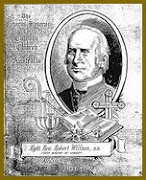








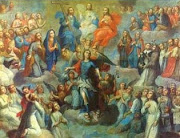




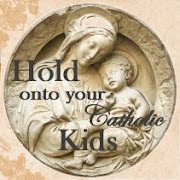















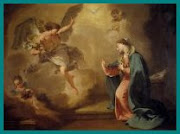












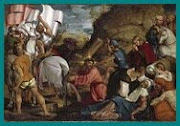

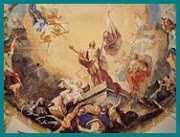


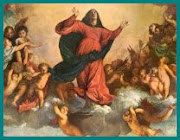
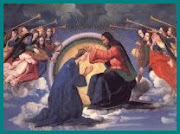








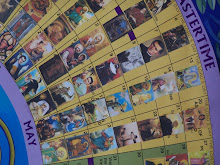


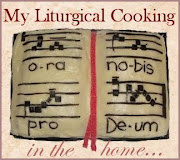




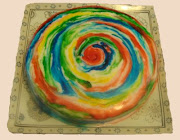


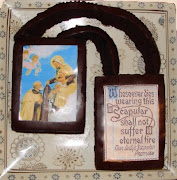


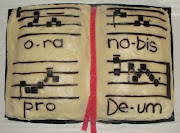

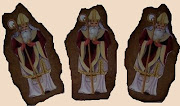







1 comment:
What lovely forget-me-nots! I hope you are feeling better soon!
Post a Comment